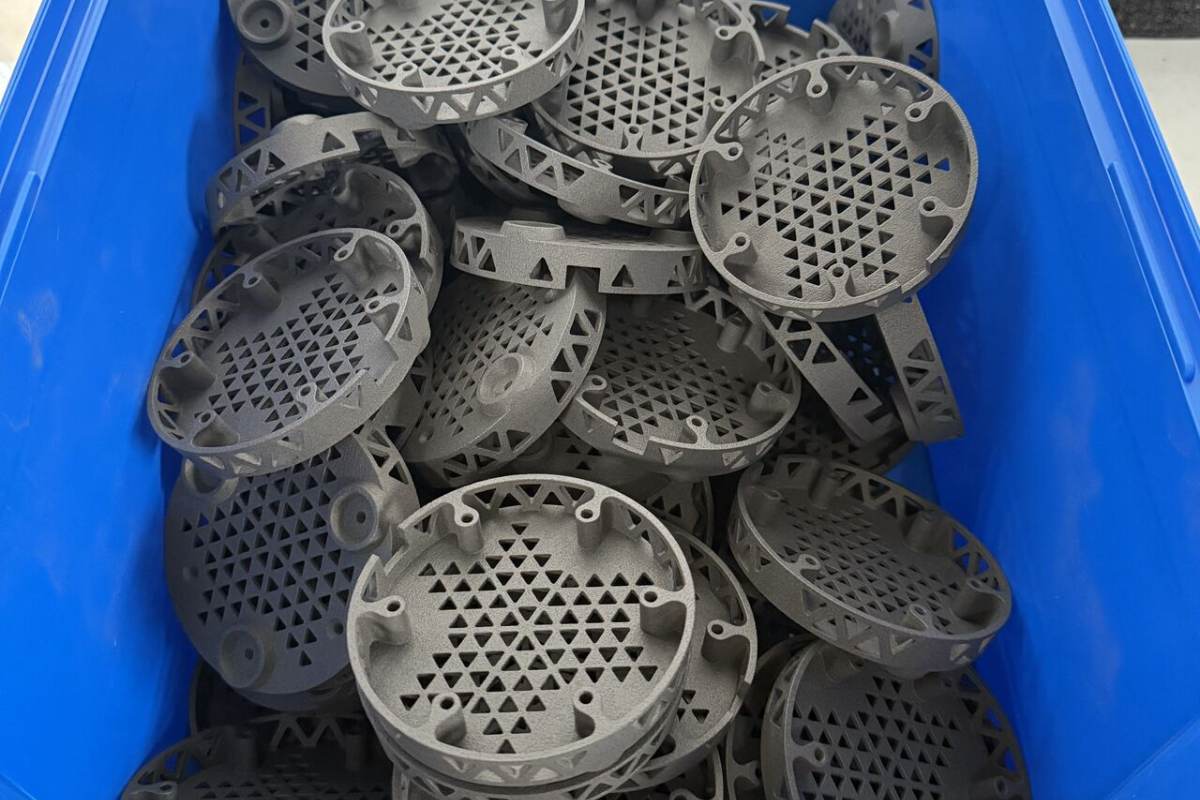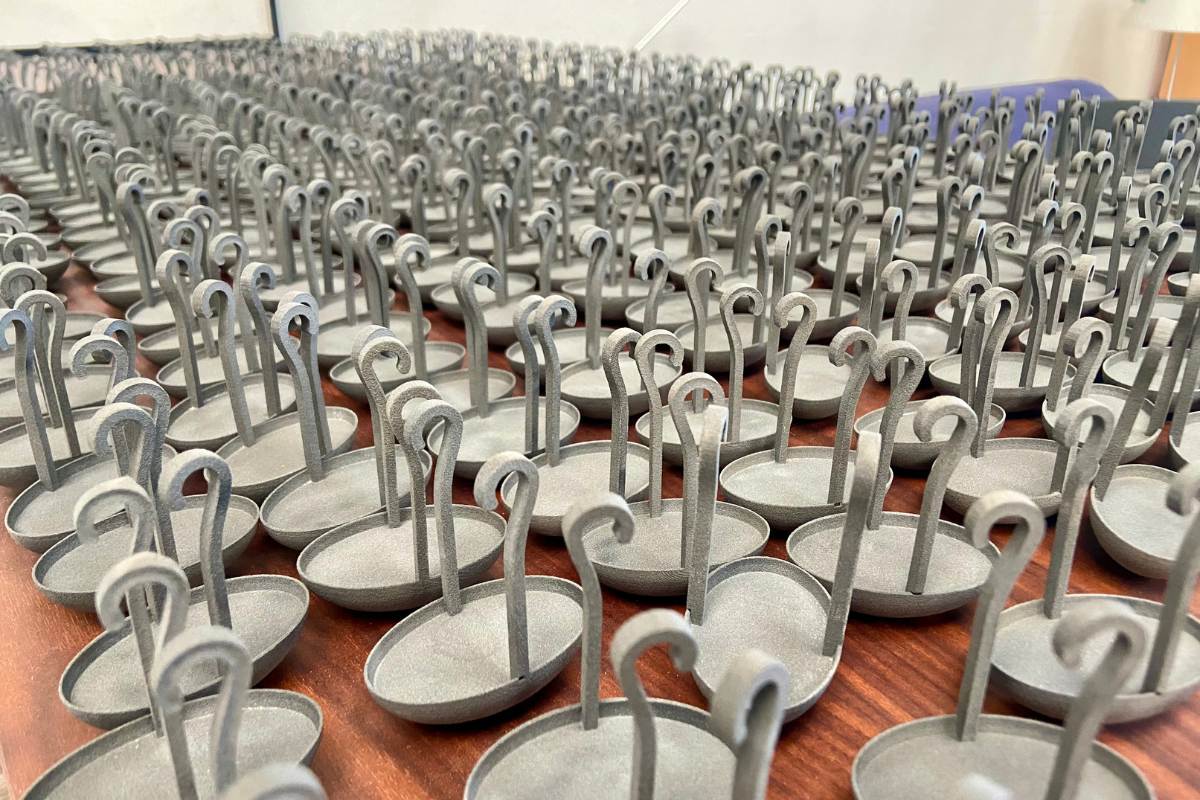When we say that Additium3D is a company that offers an Integral 3D Manufacturing Service, we mean that it is not limited to being a simple company that offers a 3D Printing service, its main work offer. Our team is able to participate in all parts of the process, from engineering consultancy to finishing with different techniques. And its ability to adapt to customer needs includes coordinating different manufacturing techniques outside of our current production capabilities.
A successful case of Additium3D's dynamism is our participation in the project to manufacture 4 recycling containers for Eco Vidrio and under the order of Propelland, in a campaign to promote new forms of recycling in a small town that will serve as a pilot.
What did the client demand of us?
Propelland had previously worked with Additium3D on smaller projects, in which we had collaborated as a 3D printed parts manufacturer with FDM technologybut far from a work as wide-ranging as what they came to present us with.
On this occasion, his company was faced with the challenge of manufacturing 4 plastic recycling containers, which would allow ECOVIDRIO to implement recycling from the car in a housing estate in Madrid. The idea was to make a container for glass pieces that could withstand outdoor use, that would be able to receive the electrical installation to count the recycling and, above all, that would be the perfect height for a user to stop in front of the recycling mouth to put in the waste.
Therefore, they came to Additium3D to show our opinion and propose different options to manufacture only 4 fully finished and painted units, adapt their designs to the manufacture chosen and then face the manufacture. A project that required engineering advice on the design, 3D manufacturing of the containers and a final finish to withstand the weather conditions and an image in line with Eco Vidrio.
How did Additium3D deal with the customer's demands?
To meet the demands requested by Propelland, on behalf of Eco Vidrio, Additium3D proposed two scenarios for carrying out the project that contemplated two different manufacturing processes.
- Complete 3D manufacturing by Additium3D additive manufacturing. Scenario in which it was planned to print the entire desired design with FDM technology and ASA material. In this case, in order to achieve better resistance, the entire plastic construction would be fibreglass-fibreglassed. After that, it would be putty, sanded and painted with 2-component paint following Eco Vidrio's company guidelines.
- Mixed Manufacture, in which one part is combined with another part, in which made with 3D Printing by Additium3DThe most complex part is the dome of the container, and the rest of the container is made of folded steel sheet. Our team would be responsible for organising the manufacture of the folding by an Additium3D collaborator, and the subsequent joining with the ASA dome reinforced with glass fibre. Finally, everything would be painted, labelled and finished by our team.
Which manufacturing method was finally chosen and why?
Between the two options proposed, Propelland considered our recommendation and chose the mixed manufacturing option as the best, mainly because to make 4 units as they finally wanted (they considered making only 2), the manufacturing times were greatly reduced for the dates when they needed it, and the costs were reduced.
If there is one thing that characterises Additium3D, it is its sincerity and honesty with its customers, and although for us mixed manufacturing meant delegating the manufacture of the 60% model to another company, we considered it to be the best option. In the end, our industrial consultancy always seeks to keep costs and manufacturing times to a minimum, and to use additive manufacturing only in situations where it really is the best option.
In the case of the container domes, as they were complex shapes that could take advantage of the potential of 3D printing, it was considered to be the best option. On the other hand, to make 4 simple walls of large volume, steel folding was quicker and cheaper as it was very simple. Therefore, our recommendation was always to combine manufacturing methods and this is how Propelland decided.
How did Additium3D carry out the manufacturing of the 4 containers?
As the maximum volume that our company can currently print in FDM is 420 x 300 x 400 mm, and the domes to be printed were larger, our design team had to split the print into parts and then join them together.
For this type of work that needs to be split and then joined we always recommend using ABS or ASA. This is due to the ability of these materials to be treated with Pure Acetone and melt their outer layers, which makes them perfect for bonding.
Once everything had been printed in several batches, the pieces were connected at the joints and then treated with pure acetone to fuse the material of the connections and make a joint block. With the domes built, they were first reinforced with fibreglass and then joined to the metal structure to complete the construction of the containers.
Once we had done the sanding, one of the many post-processing services offered by Additium3D, we finished by caulking and sanding everything to achieve a smooth surface ready to be painted and decorated.
Once everything was finished, the container was painted with dual-component paint and the necessary signage vinyls were printed to finish decorating the container, as Propelland had designed.
Last but not least for this type of large-scale work, Additium3D was responsible for palletising and protecting the 4 containers, so that they would arrive in perfect condition at their final destination, where they are currently serving as recycling containers in the town of Boadilla del Monte (Madrid).
Conclusion:
Additium3D is far from being a company that is limited to 3D printing, but seeks to accompany the customer throughout the manufacturing process of what they are looking for. Our company can advise you on manufacturing methods, can take care of manufacturing what you need, and can ensure that the end result is perfect with painting or vinyl lettering services carried out by us personally.
In the same way, Additium3D, when necessary and against its own interests, recommends to its clients the manufacturing option that offers the best price and delivery time. Being the mixed manufacturing between manufacturing techniques made by us and others made by our collaborators located near our facilities in Valencia, a very interesting option for certain jobs.
The project carried out by Propelland with the aim of manufacturing 4 recycling containers for Eco Vidrio, which are being tested in Boadilla del Monte, in the Community of Madrid, is a great example of this mixed manufacturing. In this project we combined 3D printing with steel folding from a collaborating company, all finished by our finishing team to deliver a product ready for use.







